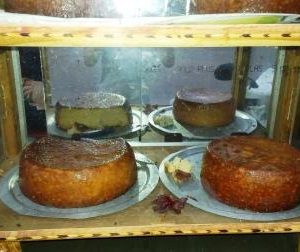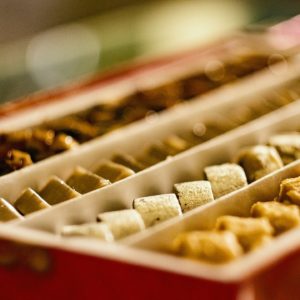By Srishti Khurana

The long-drawn battle between Odisha and West Bengal contending Rosogulla’s origin, finally came to an end with West Bengal winning the right to get the official Geographical Indication (GI) Registry. Now, efforts are underway to get a GI tag for another one of Odisha’s favourites, the Chhena Poda. Talk to any Odia, and you would realise how dear to their hearts people from the state hold this dessert. It is what they offer to Lord Jagannath and many people carry it as a gift for friends and family outside the state as well. My friend, who lives in Bhubaneswar, told me how her family always gets it from the same shop and is one of the best in the state. This dessert was also a part of the meal which won Abinas Nayak from Odisha the title of MasterChef India 2020.
In the year 1947, in a small town of Odisha, Sudarshan Sahu invented Chhena Poda by accident. He mixed the leftover chhena with some sugar and seasoning and put it into the still-hot oven. He was surprised to find the next morning what is today known as the ‘Chhena Poda’.
 Chhena Poda literally translates to ‘burnt sweet cheese’ Chhena Poda is made with chhena, semolina, sugar, and a variety of nuts and dried fruits like cashews and raisins. The ingredients are kneaded at first into a dough and then filled into containers lined with Sal leaves, which are then baked over a bed of lightly smoldering charcoals. What gives its beautiful caramel coloured La Vina’s Basque Cheesecake like almost burnt exterior is, its slow and long cooking process. It has a creamy soft interior with the exterior providing just enough nuttiness and bitterness to cut through its sweetness.
Chhena Poda literally translates to ‘burnt sweet cheese’ Chhena Poda is made with chhena, semolina, sugar, and a variety of nuts and dried fruits like cashews and raisins. The ingredients are kneaded at first into a dough and then filled into containers lined with Sal leaves, which are then baked over a bed of lightly smoldering charcoals. What gives its beautiful caramel coloured La Vina’s Basque Cheesecake like almost burnt exterior is, its slow and long cooking process. It has a creamy soft interior with the exterior providing just enough nuttiness and bitterness to cut through its sweetness.
According to Chef Heena Punwani from The Bombay Canteen, it’s a cross between a baked Rosogulla and cheesecake. While trying to recreate the magic of the original dish, she took great pains. From sourcing special full-fat milk to using Sal leaves and cooking it over charcoal. She observed that it’s essential to use thick grain sugar and make sure that sugar doesn’t melt completely and makes its own syrup inside the Chhena Poda. The Sal leaves impressions are a mark of authenticity for Chhena Poda; they provide efficient heat transfer which helps achieve the perfectly caramelized and charred crust. At her restaurant, this traditional dessert was given a modern makeover. It was served with a strawberry coulis and rice puffs coated with jaggery called Kora Khai in Odia.
The impressive repertoire of Indian desserts still has a very limited reach with most of them being famous only locally. In their efforts to popularise Chenna Poda, organisations like OMFED and Milk Mantra have come up with packaged forms of this delicacy.
There is still a long way to go for Chenna Poda to achieve the status similar as other Indian desserts like Rasogulla or Jalebi enjoy globally. When I call Chenna Poda the Indian Cheesecake, there are two ways to think about it. One could be of saying that, it is really unfair for any dish to be compared to another one that is similar. Both cheesecake and Chenna Poda exist in their own right and no one is just another version of the other, they are different and unique. Another way is to think of food as a link, a connection between seemingly distinct worlds and cultures. It is what allows us to understand and accept what seems like alien to us at first glance. There is no reason why a regular cheesecake can’t be called a western Chenna Poda, what matters most is that we get to share the joy we feel on eating a piece of this delicious treat.
There is also a huge opportunity to get creative and popularise Chenna Poda not only in India but also abroad. Indian consumers are getting more and more adventurous with their food choices. The possibility of introducing new flavours along with convenient yet attractive packaging options can be explored. With brands such as The Bombay Sweet Shop, Arq, and Khoya reinventing Indian desserts, maybe it is time that Chenna Poda has its moment. That would be one way of making sure that our rich food culture, its stories live on and get the appreciation and recognition it deserves.


Congratulations shrishti
Ur article is really good
I wish more nd more achievements to come ur way
U r doing really good
Very interesting article